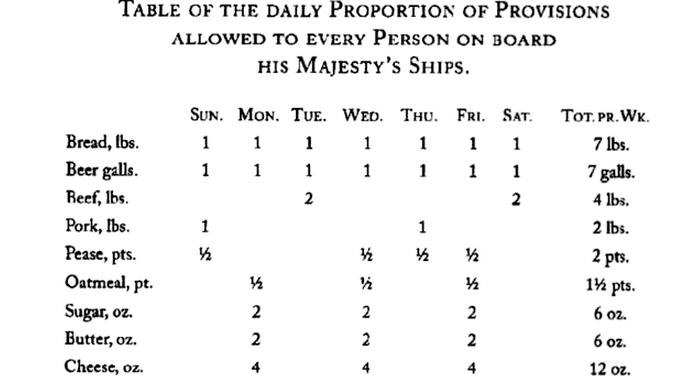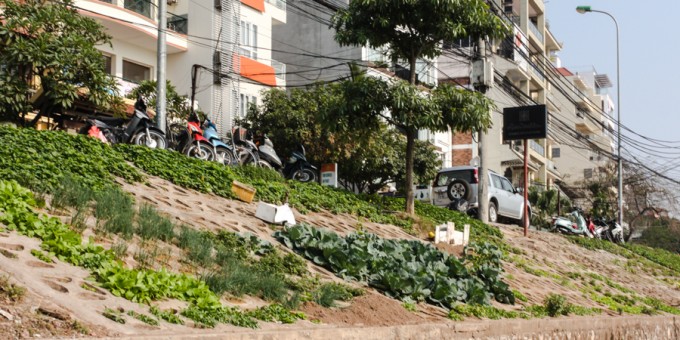
Flickr CC-BY-NC-ND
by Caitlin Bradley Morgan
Why include food and agriculture in the Green New Deal?
Our food system is inextricably linked with the climate crisis in a self-reinforcing feedback loop. Agriculture is responsible for 25% of global greenhouse gas emissions and the result, climate change, goes on to disrupt reliable food production. To combat climate change, we must shift how we produce, distribute, consume, and dispose of food. To adapt to climate change, we must build agricultural systems that are resilient to disruption. The timeliness of this move was evident recently as a national coalition of farmers and ranchers endorsed the Green New Deal.
The Green New Deal mentions food in broad strokes. Its focus is on consumers obtaining food, which the bill says can be supported “by building a more sustainable food system that ensures universal access to healthy food.” The bill’s strength is in its acknowledgement of systemic injustices wrought on marginalized groups, and its goal for a “fair and just transition” to net-zero greenhouse gas emissions. If these strengths are built into eventual policy mechanisms, they should influence not only food quality and access, but all levels of the food chain.
A Green New Deal must address capitalism’s food problems through goal-oriented, stakeholder-led process
Underlying many ills of our food system is the sometimes unexpected truth that a rational agricultural system is incompatible with capitalism. This is because the goals of healthy agriculture and the goals of capitalism are diametrically opposed. When capitalism’s logic governs agriculture, it affects all manner of management systems, making it difficult or impossible to implement ecological or humane practices that might decrease short-term profit margins. It also results in the kinds of outcomes the GND seeks to remedy: hunger surrounded by abundance, unnecessary waste, the systemic injustice of farmer displacement, labor abuses, and fossil fuel use.
Therefore, GND food policies should begin with identifying the overarching goals, because the goals of a system are some of the most powerful leverage points for change. All policy mechanisms should be guided and tested against the vision of a “just transition,” and it would be useful to identify sub-goals that support a just transition—for example, climate change mitigation; climate change resilience; an adequately fed and nourished human population; pay parity and economic justice for farmers; healthy and diverse agroecosystems; etc.
Does “efficiency” change if we alter the timescale, i.e. if we think about resource efficiency in terms of decades or centuries, rather than single-year yields?
Similarly, during policy discussions, it is useful to question goals we might accidentally take for granted. For example, why do we need highly “efficient” agricultural production as it relates to labor? Does efficiency in this sense compete with goals of reduced fossil fuel use, biodiverse agriculture, or widespread employment? Does “efficiency” change if we alter the timescale, i.e. if we think about resource efficiency in terms of decades or centuries, rather than single-year yields? This process point can help avoid implementing policies that recreate problems driven by assumed, rather than intentionally adopted, goals.
Finally, GND policy discussions must incorporate, not ignore, the historical context of our current food system. Our food system is built on systematic wealth accumulation and the dispossession and cultural erasure of marginalized people in the United States. For GND policies to be “just,” they must account for and begin to reverse these patterns. To ensure that outcomes have integrity, and that mechanisms are well-crafted, policies must be developed directly with farmers, food systems workers, sustainability experts, and social justice advocates. As the Agroecology Research-Action Collective reminds us, “…the Green New Deal will only succeed if it helps rapidly eliminate the fossil-fuel economy, and transforms industrialized agriculture into agroecological, regenerative agriculture, with special attention to rural communities and inclusion of historically marginalized, and socially disadvantaged groups.”
One goal-aligned solution: Basic Income for farmers
One solution, in line with a just transition in food and agriculture, is basic income for farmers. “Universal basic income,” recently brought into mainstream debate by Democratic presidential candidate Andrew Yang, is a monthly stipend provided by the government to all citizens. While there is a compelling argument for UBI for everybody, basic income may be critical for especially for agriculture. Proponents of UBI argue that one of its essential functions is allowing people freedom to make choices based on what they truly want or need in life, without potential financial crisis dictating their options. For people who work in agriculture, that freedom is the freedom to farm.
Farmers in the United States are in historic levels of debt. In order to make enough money to continue, many farmers have to expand their farms—regardless of whether it is a sustainable or desirable choice—which usually means building or purchasing expensive infrastructure and equipment. The result is a race to increase profit margins and pay down debt, often prohibiting farmers from making choices based on land stewardship or care for workers. Over half of American farms earn negative income, losing more than they make, and rely on off-farm income for survival.
There is increasing recognition that agroecology, the science of farming in tune with local ecosystems, is one way forward for just and sustainable food systems. But in the United States, where land is expensive, industrial agriculture subsidized, environmental regulations minimal, and parity pricing absent, it can be economically untenable for people to start agroecological farms in a rabidly capitalist system. Young farmers interested in raising sustainable, healthy food cannot make enough money to do so.
Thus, a basic income would be a way for people to produce food without needing to exploit themselves, their employees, or their land. (India recently announced that it will be providing UBI for farmers, expecting it to double farmer incomes.) Anyone working in agriculture should be eligible for this support, without making distinctions between farm owners and farm workers. Because up to half of farmworkers are undocumented, this policy would likely necessitate a corresponding reform in immigration policy, at least for the food sector, as put forth recently by the Sanders Campaign’s Green New Deal plan. It is also possible that another aspect of food justice—access to fresh and healthy foods, mentioned in the GND—would also benefit from basic income for farmers, by supporting agricultural livelihoods without astronomically raising the cost of their products.
Basic income would be one step toward creating safety for people who want to farm but lack financial security.
Furthermore, a basic income begins to address historic injustice. Reversing the trends of land theft and ongoing dispossession in the food system is difficult for many reasons, one of them being that farmers from marginalized communities do not have access to the same wealth, credit, and financial safety nets of more privileged farmers. Basic income would be one step toward creating safety for people who want to farm but lack financial security.
Yang’s UBI proposal, the “Freedom Dividend,” is $1,000 per month. This might not be enough for farmers. The Freedom Dividend is designed with the idea that it will encourage people to find jobs to supplement UBI that alone keeps them at the poverty line. But farmers already have jobs. We need a debate among stakeholders about the benefits of parity pricing—ensuring farmers are paid enough to cover their costs and living expenses—versus basic income, in terms of allowing farmers to stop overproducing to cover their debt, and make both environmentally and socially sustainable management choices. A just level for farmers might instead be the living wage for their area.
Other social programs that could make farming, and sustainable farming in particular, a more viable option: free childcare, free health care, free education, and a guaranteed farming pension. The latter could allow farmers to keep their land in agriculture, rather than selling it to cover retirement costs.
The bottom line: anyone growing food for other people, especially if they are growing it in ecologically-sound ways, should be able to provide for themselves and their employees. If we want to make sustainable farming desirable, viable, and just, we must support it by reorienting policy to support such worthy goals.
Caitlin Bradley Morgan is a doctoral candidate in Food Systems at the University of Vermont, studying the intersection of on-the-ground efforts and wider systems change.




